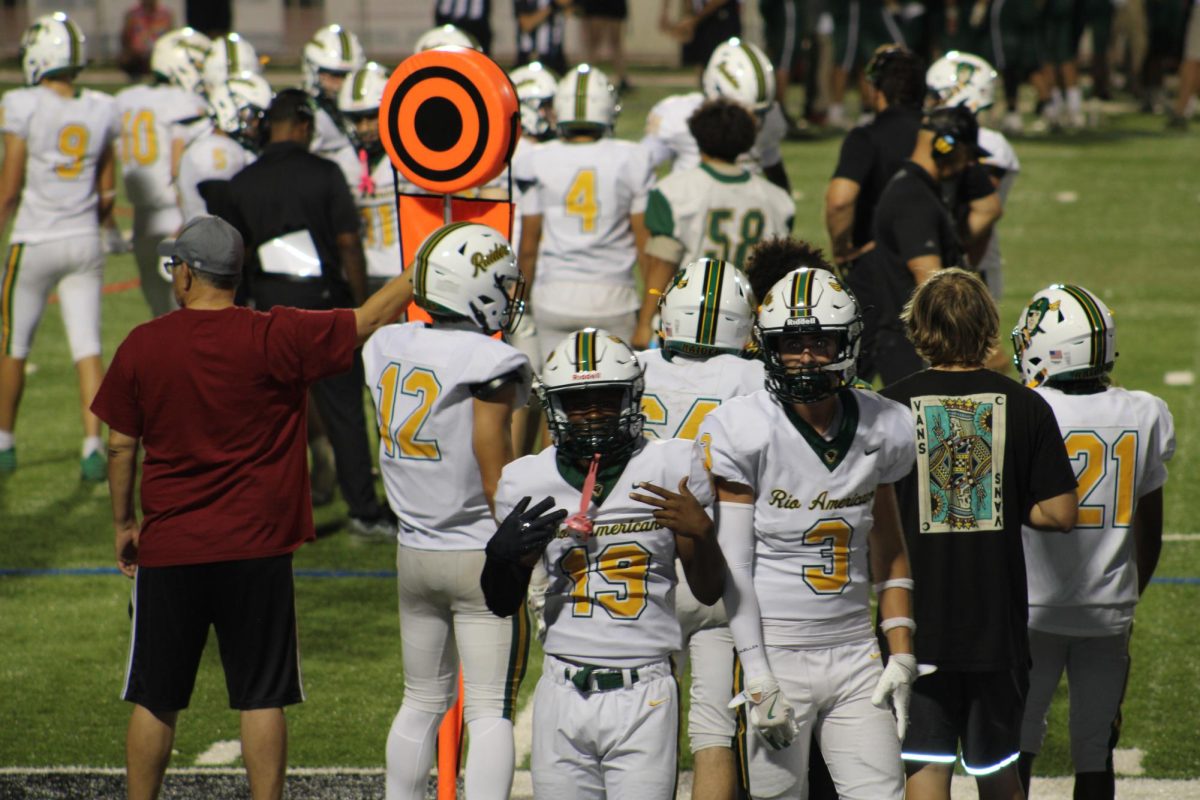Veteran social science teacher Justin Mason, who sent his own two sons to Rio Americano, knows something about the challenges that boys can face fitting into the traditional structure of high school.
“Girls on average are able to focus a little more in class,” he said. “It may be the way we structure schools, it’s a lot of sitting.”
His observations that boys may have a harder time sitting still, listening to lectures and ultimately excelling in the traditional classroom matches with a recent national teen survey and the Mirada’s own dive into data at Rio.
In the national survey released last month by the Pew Research Center, teens say that at their schools girls get better grades, participate more in class and take on more leadership roles. Boys, on the other hand, are more likely to be disruptive and get into fights. Additionally, 60% of girls said they plan to attend a four-year college compared to 46% of boys.
“Boys are more disruptive and girls are more focused,” said senior Farhad Azizi. “In my econ class we act out because we like to have fun. But girls have better grades, act more mature and have more leadership roles.”
Gender gap stats
In some respects, Rio reflects national statistics. But by other measures the large relatively affluent suburban high school bucks the trends.
In 2024, about 48% of Rio Americano boys met or exceeded standards on the statewide CAASPP English test, compared to 57% of girls. Boys performed slightly better than girls in math, with 35% and 30% reaching or exceeding standards, respectively. But girls have been gradually closing that gap. Similar gaps exist statewide.
The average GPA for a female student in the U.S. is 3.23, which drops to 3.0 for boys, the American Institute for Boys and Men reports. In every state, girls outpace boys in reading comprehension by more than 40% of a grade level standard.
However, according to the Mirada’s annual college poll of Rio Americano’s 438 seniors, 147 boys and 145 girls report that they are going straight to a four-year college.
Statewide there is less parity. According to the California Department of Education, in 2021 about 87% of girls statewide graduated high school, compared to 80% of boys.
Behind the numbers
But what’s behind this persistent gap in academic performance by gender?
Students say it can be hard for boys to feel supported in the classroom, and many feel unmotivated or sluggish. Girls are already expected to outperform boys in many classes.
“I think boys sometimes have it harder, dependent on the teacher,” sophomore Sydney Anderson said. “I do feel boys are held to low expectations and teachers are harder on them than girls thinking they may not be on task.”
It may be that boys mature more slowly than girls, according to many of the dozens of students contacted by the Mirada for this article.
“Boys have fallen behind girls because they are less mature, have more trouble being on task, and lack effort and motivation to do any work at all,” sophomore Tyler Talaska said.
Some students said boys are harmed by low expectations.
“I think boys are falling behind in classes because the expectations are set lower for them than they are for girls,” junior Mikayla Chacon said. “I notice that teachers respond to boys differently than they do with girls, more often than not they get excuses of ‘they’re boys’ or ‘they don’t know any better.’”
Social influences outside of school also have a large impact on boys.
“I think the reason why boys are feeling discouraged is because of “alpha male” influences that tell them to disregard school material,” said a student who asked not to be named. “Influencers like Andrew Tate and the like in the alt-right tell them that ‘school is brainwashing them’ and causes them to feel proud that they are performing worse, compared to girls who don’t have these toxic masculinity influencers.”
Looking for solutions
Student ideas for helping boys to thrive ranged from fostering more cooperation to encouraging more competition. Students also suggested more counseling and valuing typically male work.
However, one idea was repeated more than any other: Let boys–and girls–move.
“My advice would be to change the system and give opportunities for getting out of your seat more, learning through more project-based ideas,” Mason, the social science teacher, said. “More activities would help boys to get that energy out.”

























